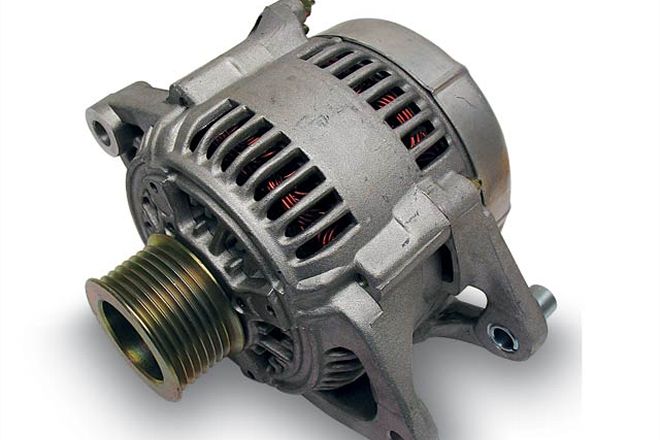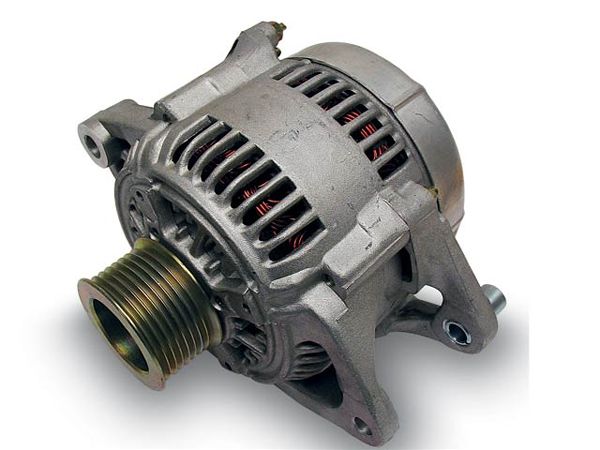
 The Premier Power alternator is a simple bolt-in replacement designed to increase your charging system's ability to restore spent energy. Available for most popular 4x4s, these alternators are available with power ratings from 95- to 240-amp configurations. We picked a 195-amp unit to replace the factory 95-amp alternator. This should effectively double our rig's charging ability. This alternator is said to put out 100 amps at idle, so we shouldn't have any problems winching out stuck race trucks in Baja
The Premier Power alternator is a simple bolt-in replacement designed to increase your charging system's ability to restore spent energy. Available for most popular 4x4s, these alternators are available with power ratings from 95- to 240-amp configurations. We picked a 195-amp unit to replace the factory 95-amp alternator. This should effectively double our rig's charging ability. This alternator is said to put out 100 amps at idle, so we shouldn't have any problems winching out stuck race trucks in Baja
Editor's Note--Any vehicle can benefit from a beefed-up charging system. Choosing the right components that won't adversely affect other parts of the system is the key.
For most readers, the electrical system is completely ignored because the factory engineers have already built in a safety buffer to prevent problems with aftermarket accessories such as inverters, CBs, and auxiliary lights. In most cases, these safety buffers will prevent a discharge scenario. However, on rigs with unusually high electrical loads--such as those with a winch, compressor, and perimeter lighting--the high electrical demand can quickly tax the system and cause low voltage issues. Remember, the vehicle's battery is simply a bank account of electrical energy, and just as in real life, you can't spend more than you make. This is why we recommend upgrading the heart of the system first. In our case, this upgrade came in the form of a high-output alternator from Premier Power Welder. Next, we picked up two high-capacity deep-cycle batteries from Odyssey (Model PC2150). Both of these upgrades were installed on our resident diesel-powered project Dodge Ram, aka the Baja Bomber.
Battery Glossary
CCA (cold cranking amperes): The CCA rating refers to the number of amperes a battery can support for 30 seconds at a temperature of zero degrees Fahrenheit until the battery voltage drops to 1.20 volts per cell, or 7.20 volts for a 12-volt battery. The Odyssey PC2150 carries a rating of 1,090 CCA, meaning that the battery will provide 1,090 amps for 30 seconds at zero degrees F before the voltage would drop to 7.20 volts.
MCA (marine cranking amperes): The MCA rating of a battery is very similar to the CCA rating; the only difference is that while the CCA is measured at a temperature of zero degrees, the MCA is measured at 32 degrees F.
PMCA (pulse marine cranking amperes): The PMCA rating refers to the short-duration (typically about 3 seconds) cranking amp rating of the battery at 32 degrees F.
Reserve capacity: The number of minutes that a battery can support a 25-ampere load at 80 degrees F until its terminal voltage drops to 1.75 volts per cell or 10.50 volts for a 12-volt battery. Thus the PC2150 battery can be discharged at 25 amps for 200 minutes at 80 degrees F before voltage drops to 10.75 volts.


